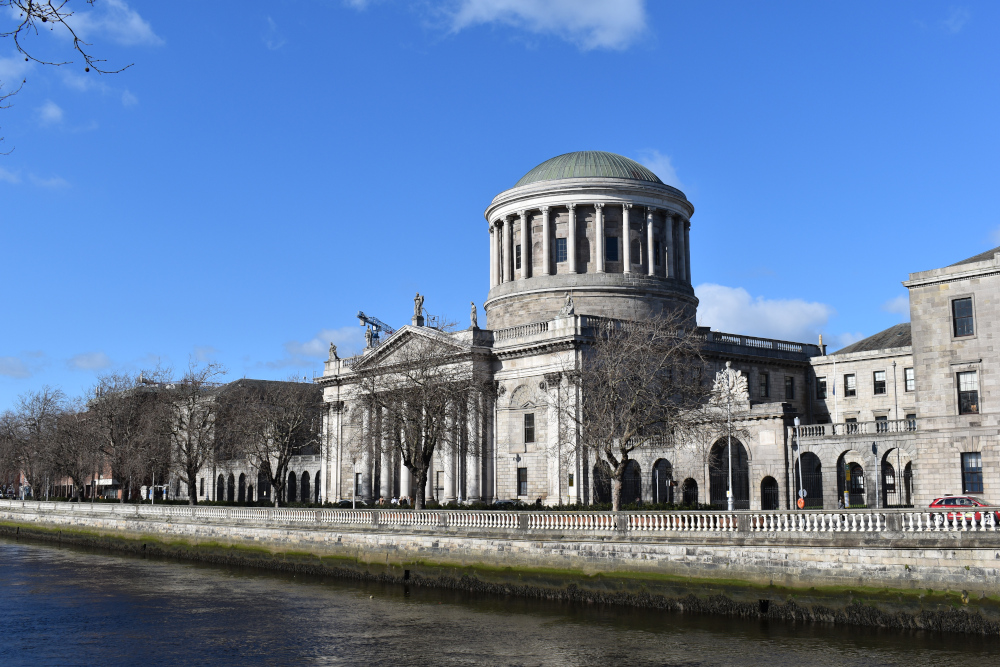High Court: Former student fails in personal injuries case against school after he fell into a wall during PE class

The High Court has dismissed a personal injuries action brought against a school by a former student alleging negligence in the conduct of a PE class. The student claimed that a relay race had been organised negligently and, as a result, he fell into a wall.

About this case:
- Citation:[2023] IEHC 367
- Judgment:
- Court:High Court
- Judge:Ms Justice Marguerite Bolger
Delivering judgment in the case, Ms Justice Marguerite Bolger held that there were certain inconsistencies in the plaintiff’s account of the accident and that she preferred the evidence of the PE teacher that the race was safe. The teacher’s account was different from the plaintiff’s but was more reliable and coherent, the court said.
Additionally, the court made certain negative observations about the defendant’s expert witness evidence. It appeared to the court that the defendant’s expert did not understand her duties as an expert witness, exemplified by the expert stating that she did not know she was required to provide a declaration of independence in her report.
Background
In January 2015, the plaintiff was a 15-year-old student in his third year of secondary school. The plaintiff was a participant in a PE class with 23 other students. The plaintiff’s account of the class was that the PE teacher organised a relay race in which every student was paired with another student. The start and finish point was at the end of the school hall, with a cone placed at a midpoint. It was claimed that the students were to race in pairs to the cone, turn around and run to the finish point at the hall wall.
The plaintiff alleged that he raced against his friend, D. It was claimed that D bumped him during the race which caused the plaintiff’s glasses to fall off. He proceeded to run as fast as he could to catch up with D, but stumbled at the finish line. The plaintiff claimed he hit the wall, fell unconscious and awoke to find the teacher implementing the concussion protocol.
He returned home early after the incident and complained of elbow pain later in the evening. He was transferred to hospital and required two surgeries in three days to fix a fracture in his left elbow.
The plaintiff’s account was corroborated by a former classmate, who claimed to have a clear recollection of the relay race. His account of the accident was the same as the plaintiff’s, although the classmate described how the plaintiff was unconscious for 20 or 30 seconds. The classmate also stated that he only became aware of the loss of consciousness when the plaintiff told him about it.
The defendant put forward the evidence of the teacher, who had a different account of the organisation of the race. The 24 students were divided into three teams and the route was laid out in the middle two-thirds of the hall. The start/end point was well away from the hall walls. As such, it was said the three teams were competing against each other instead of 12 individual races as claimed by the plaintiff.
It was suggested that the plaintiff tripped over himself, stumbled several metres before falling and made contact low on the wall. The teacher was satisfied that the plaintiff had no complaints of injury. When he saw the plaintiff in a sling several days later, he became aware of the injury and filled out an accident report form.
Th expert evidence in the case agreed that the teacher’s account of the relay was safe and appropriate while the plaintiff’s account of the race included negligence and foreseeable risk.
High Court
Ms Justice Bolger began by considering the evidence of the defendant’s expert as the plaintiff’s counsel had submitted that no weight should be attached to her report. The court noted that the expert strongly endorsed the teacher’s approach to the race but had not recorded any detail about the layout of the race and could not recall key aspects of her conversations with the teacher.
Additionally, the report recorded that the distance the plaintiff travelled during his fall was about 10 feet, which was considerably shorter than the teacher described. She also had strayed outside her professional competence by questioning whether the plaintiff lost consciousness in the accident.
Finally, the court highlighted that the expert “expressed sentiments” in the report and cover letter in positive support of the defendant’s position and a hope that the plaintiff would not succeed. Such comments had “no place in an expert’s report” and led the court to question the expert’s understanding of her duty to the court. In particular, the court was surprised that the expert did not provide a declaration of independence on the basis that she did not know it was required.
As such, the court decided to give no weight to this expert evidence (Duffy v. Magee & ors [2022] IECA 254 applied). However, this did not have any bearing on the case as there was no dispute between the parties that the defendant’s version of the race was safe and the plaintiff’s version contained foreseeable risk.
Turning to consider the evidence of the race, the court noted that the only contemporaneous records were from the teacher’s accident report form, which outlined that the defendant’s version of the accident. The form was consistent with the defendant’s evidence at trial. Further, it was also pointed out that A&E notes outlined that the plaintiff “lost the footing”.
On foot of medical documents, the court accepted that the plaintiff had lost consciousness for a few seconds. However, the court rejected the classmate’s evidence that the plaintiff lost consciousness for 20 or 30 seconds. It was inconsistent with the plaintiff’s own account, the court said.
In general, the court held that the classmate’s evidence appeared to be based on second-hand conversations with the plaintiff and therefore was not reliable. The court also observed that the classmate had a “remarkably clear” account of an eight-year-old accident despite claiming to have had no intervening discussions since that time.
Ms Justice Bolger noted that all parties referred to the race as a “relay race” but only the teacher’s account actually accorded with that description. Further, it was common case that it made no sense to lay out the race course in the manner alleged by the plaintiff.
In relation to the law, the court acknowledged the principle that accidents/injuries may occur in safely organised physical activities (see Dunne v. St Paul’s [2019] IEHC 22; Carolan v. St. Ciaran’s School [2006] IEHC 416).
In the circumstances, the court preferred the reliability of the defendant’s evidence relating to the safety of the course and the optimum use of space and time in the hall. There was no reason “bar sheer incompetence” as to why a running route would be set up so close to a wall as alleged by the plaintiff.
Finally, the teacher accepted that he had not instructed the plaintiff not to run into the wall. However, the court stated there was no need for the teacher to say this to a 15 year old based on the layout of the course.
Conclusion
Having regard to these findings, the court was satisfied that the plaintiff had failed to establish negligence on the part of the school. The claim was dismissed.
O’Brien v. Byrne and Anor. [2023] IEHC 367










